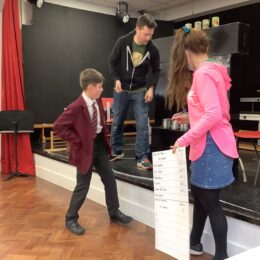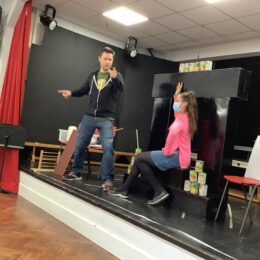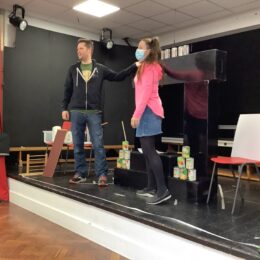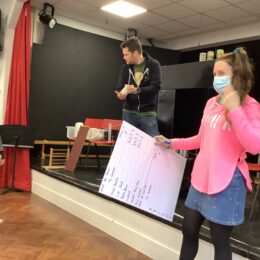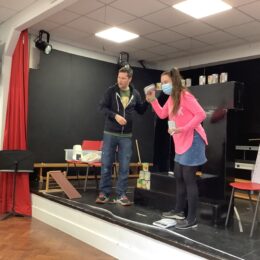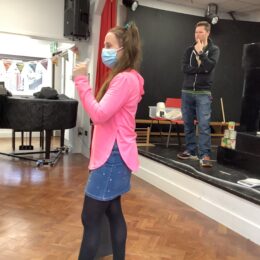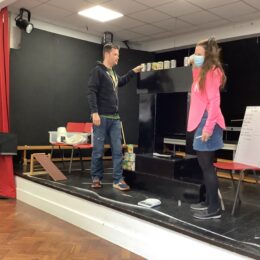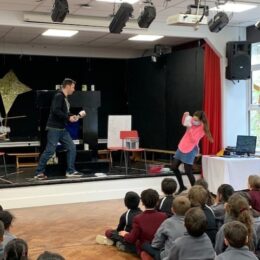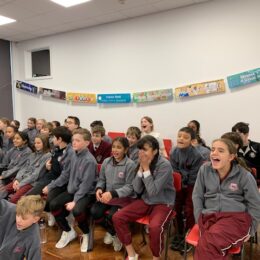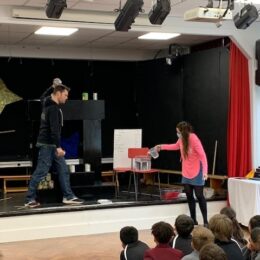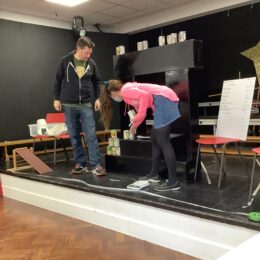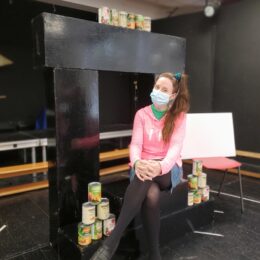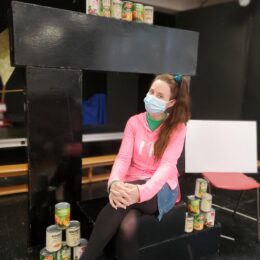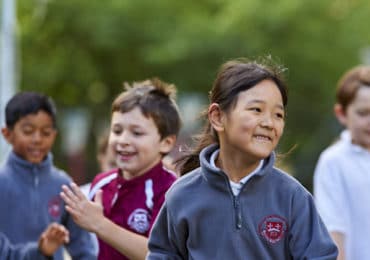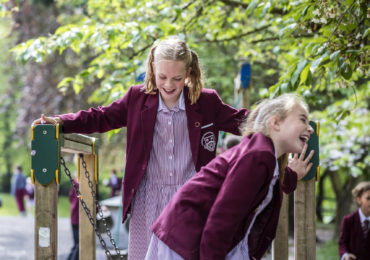Science Week Starts With Problem Solving STEM Assembly
This week we celebrated Science Week with a full integration of all STEM subjects in a themed assembly.
Mrs Hills-Matthews and Mr Lang became young scientists for the day as they tried taking ‘shelfies’ of themselves in the ‘Caterham Prep Supermarket’ tin can aisle – it was pointed out by an astute Year 6 pupil, quite rightly, that they had not sought permission from the brand owners to post pictures online as they wanted. In haste to continue their ‘shelfie’ mission our two young scientists ripped all the labels off the cans – providing a great silver backdrop…only to then be told by another very disapproving Year 6 pupil that the two scientists were acting foolishly as now they wouldn’t know what was in the cans and they would get into trouble with the shop owner.
What to do? The scientists had to work out which tins had sliced peaches, mixed fruit salad, baked beans, tomato and basil soup, custard and cat food in! No one wants custard when you have toast waiting for beans and no one wants sliced peaches when you are waiting for soup…and no one wants cat food to eat (ever) when you fancy some mixed fruit salad!
We needed all our science skills to discover the contents of the tins using clues from the labelled cans around. Ideas were taken from the audience of what we could do with the science kit we had available…
A measured bucket of water, weighing scales, a clock, rulers, tape measure, ramp
We considered displacement of water and discussed how we would put the cans in after Mr Lang suggested throwing them in and seeing how big the splash was…after some debate, it was decided it would be more accurate to weigh the cans using the scales!
Lots of children helped with the weighing and were careful with the units and decimal points. Mrs Hills-Matthews added the values to a table to compare the labelled and non-labelled cans – some were very close indeed – but due to the labels missing, none of the cans were exactly the same mass…they needed to dig deeper.
Observation skills came into play now by carefully inspecting the cans for similarities – and they found three had ring pulls and 3 did not – this split the pack – now we had them grouped, but we still needed to figure out which one of the three tins in each group were which. Our next observation was through listening to the contents as the tins were shaken. There were distinct differences with some sounding gloopy, others sounding wet with bits rattling and some entirely silent. It was easy to spot the gloopy ones so the first guesses were made with the custard and soup being removed.
Density can affect how things move, with solids moving more predictably than liquids – so the ramp was used to see how the remaining cans travelled down the ramp (straight or wobbly) and how far they rolled using a tape measure. Many of the audience were excellent in remembering the safety points in using the ramp from their friction practicals and so the tests were started.
One can rolled straight and true a long way – and when cat food was tested against that, it was an incredibly close match. Another can went quite far, but wobbled a little at the end – this can matched how the baked beans rolled, so a prediction was made on that can too. Last were the two cans of fruit – both of these did not roll straight and turned, this was due to the solids sloshing with the liquids inside changing the centre of mass. There was a difference though – one can rolled further than the other – so a prediction between peaches and mixed fruit salad was made.
Now came the gloopy reveal – Mrs Moore said she would lend the young scientists the money to give to the shop keeper as everyone really wanted to see if we were right…
A combination of all STEM skills – technology, IT, science, maths and engineering, we can triumphantly report Caterham Prep children got 6 out of 6 correct!



